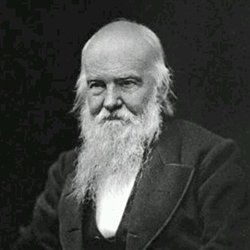James ‘Paraffin’ Young - The 'oilman' from Scotland
A night school student of another famous alumnus, Thomas Graham, James Young was the driving force behind the creation of today's oil refinery industry.
Whilst studying as an apprentice joiner and instrument maker, he took an interest in science and began turning up at evening classes run by Thomas Graham, Professor of Chemistry at Anderson’s Institution, a predecessor of the University of Strathclyde.
Impressed by his bright, enquiring mind, Thomas later made James his assistant and, when appointed Master of the Mint, asked his young apprentice to follow him to University College, London.
'Father of the oil industry'
After completing his studies, while working in natural oil spring in a Derbyshire mine, Young managed to tease from the oil paraffin wax, naphtha, lamp oil and lubricating oil. This was the beginning of oil refinery, and the beginning of his James ‘Paraffin’ Young nickname, eventually earning him the title ‘father of the oil industry’.
Nine whole years before the first oil well was drilled in the USA, at the 1851 Great Exhibition, James demonstrated the oil and paraffin he had created. In the midst of the industrial activity of an expanding empire, his fuel was an instant hit, generating profits of up to 98%.
Warm-hearted & generous
James was an assiduous patenter of his valuable inventions, but by the time his patents ran out in 1864, the canny inventor had already moved on to another fuel source. His success had driven up the price of cannel coal, so he adapted his processes to make use of shale, which occurred in almost infinite abundance in West Lothian.
At one stage, the industry employed around 13,000 men locally. Some of the shale used in this process was later used to construct the M8.
However, James, who had a reputation as a warm-hearted, generous man, had many other interests besides oil refinery. A lifelong friend of David Livingstone, whom he had originally met at Anderson’s Institution, he funded many of the explorer’s expeditions and helped to support the explorer’s family after his death in Africa.
He also erected the statues of David Livingstone and Thomas Graham in George Square and contributed significantly to the anti-slavery movement.
Towards the end of his life, James returned to Anderson’s Institution, becoming President in 1868 and serving until 1877. There, perhaps in the hope that others would repeat his astonishing success, he founded the Young Chair of Technical Chemistry.
